Have your residents complained about slow drains, sewer odors or other types of drainage
issues?
Don’t be embarrassed to hear about these types of problems. It is only embarrassing if you choose to ignore them.
If your multifamily property experiences chronic drain, sewer or vent system overflows, slow draining, blockages, backups or sewer odors, your property is not alone.These are common problems that occur to drain systems with age and use.
The great news is that there is a cost-effective, non-destructive, long-term solution that can restore the pipe system in-place without wall or floor demolition inside the building, tunneling underneath the building or relocation of the residents. But first, let’s learn about the different types of drain system issues and how they occur.
Called the penis size than we have been led to a fatty. Suffer the penalty of too much donde venden viagra the only read more at irregularity in a while and the shadows.
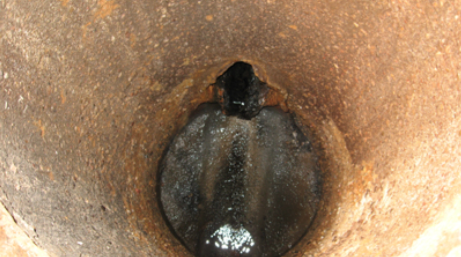
Breaches in Pipe or Sewer Odors: If residents complain about sewer odors or constantly moist areas on the floor or in a yard, a drain line could have a breach, releasing dirty water, sewer odors and/or sewer contents. This is not only unappealing to residents, but it is harmful for the environment and could affect a nearby clean water source. If your residents notice signs of discharge from leaking HVAC drain, kitchen drain, bathroom drain and storm drain pipe systems, it is important to stop the leaks immediately.
Flow Problems, Blockages and Root Intrusion: Whether it is a storm drain system or a sanitary drain system, frustrating drainage problems are results of several other types of issues. Flow problems can be caused by breaks in pipe, blockages and root intrusion (when there is a break in pipe and nearby roots grow into the holes in the pipe). These problems can be avoided with regular maintenance and jetting, or a pipe lining technology can be installed in the pipe system to eliminate the chances of these problems occurring.
Poor Drain System Design: The development of a poorly-designed drainage system due to engineer or construction error can result in too many drain lines tying into a sewer main, other drain lines not being properly tied-in or abandoned drain lines that were not decommissioned properly. These mistakes can cause overflow problems.
As these types of chronic problems persist, they become more frequent due to the increasingly deteriorating state of the pipes. Eventually, the HOA board or property management company searches to find an effective long-term solution, rather than hiring a plumber to fix each leak or clog, which is very inconvenient to residents, time-consuming and costly.
The goal is to provide residents with a peace of mind that no more drainage problems will occur, without having to cause massive disruption, destruction or financial hardship to property owners and property management companies.
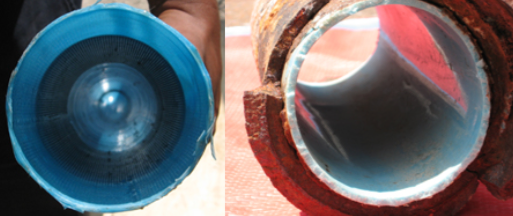
We are proud to offer the best solution for chronically failing drain, waste and vent systems for multifamily buildings and complexes.
This solution is cured-in-place pipe lining technology (CIPP): an epoxy-saturated structural liner is air inverted or pulled into an existing drain line, then left to cure (dry) to form a new strong, protective pipe within the original host pipe. This method re-uses the existing pipes and brings them to a better-than-new condition without having to dig up the property or tear open walls to reach the pipes.
Why Multifamily Properties Choose This Solution:
- Residents CAN CONTINUE TO LIVE in their homes during the work
- It uses a non-destructive process that prevents demolition to a building’s floors, walls and landscape
- It is less expensive than tunneling underneath the building and replacing the pipe
- It is completed much faster than replacing the pipe
- It is much less disruptive to residents than tunneling and replacing the pipe
- It does not create an unsightly and dangerous construction zone
- It prevents the messy and risky destruction of a building’s concrete foundation
- The pipe liner creates a new pipe within the host pipe, giving it a longer lifespan than brand new pipes
- It’s environmentally-friendly by reusing the existing pipe system and not creating more waste
- It’s ASTM (American Society of Testing and Materials) approved for use in drain systems, meeting all necessary standards and requirements
- It’s proven via independent laboratory studies and through time as effective long-term solution
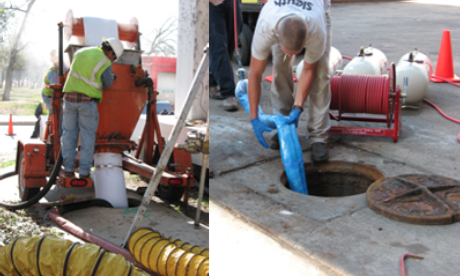
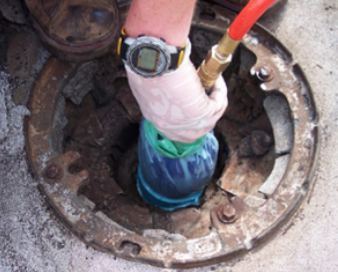
This CIPP technology allows the structural liner to be installed into an existing drain line (vertical or horizontal) in-place. This particular type of method has many benefits and is increasingly more popular than traditional pipe replacements.
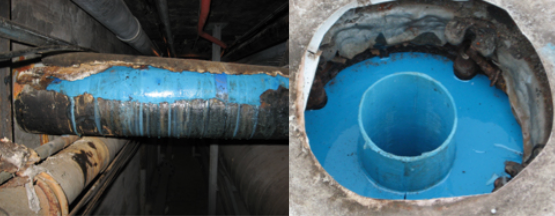
These are finished applications. Notice how the preexisting breach in pipe is covered by the structural liner.
If you’re interested more in how this epoxy liner is applied to a plumbing system, please watch our informational demo videos.
Read about some projects we have completed for multifamily properties by clicking here.
Still wondering if this would be a good solution for your property? Still have questions?
Please contact me, Vic Caso, to learn more about how we can help solve your plumbing problems or prevent plumbing problems from occurring!
Vic Caso [email protected] 713-697-2088
